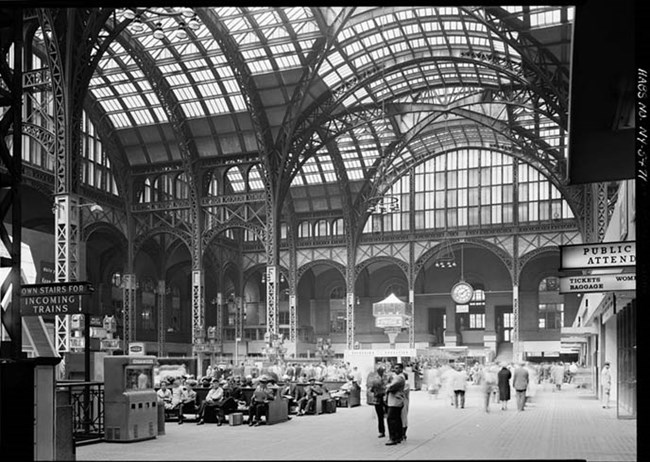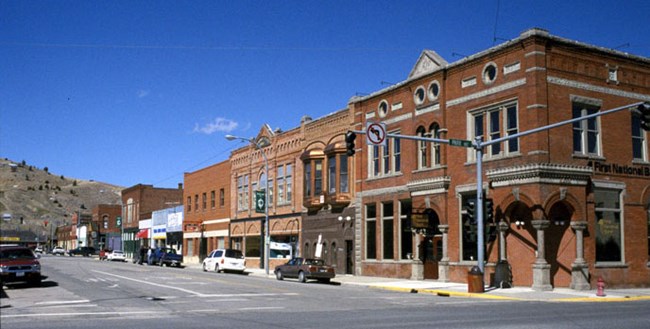

After World War II, the United States seemed poised at the edge of a limitless future, and its vision of progress was characterized by the sleek and the new. Urban renewal was seen as a way to clear out the slums, get rid of "obsolete" buildings, make space for an exploding population, and accommodate the burgeoning car culture. Wide swaths were demolished: entire blocks, neighborhoods, business districts, all razed to make way for the new. By the 1960s, urban renewal had altered the face of the nation's cities.
But out of this wholesale erasure of the old grew the most important law governing how we treat those places that define our past: the National Historic Preservation Act. It was the first national policy governing preservation and it would shape the fate of many of our historic and cultural sites over the next half-century. There had been earlier measures to foster preservation—the Antiquities Act of 1906 and the Historic Sites Act of 1935—but none were as sweeping or as influential as the National Historic Preservation Act.
Interior concourse of New York's Pennsylvania Station in 1962. The Beaux-Arts style station (designed by McKim, Mead, and White) was completed in 1910. Despite a fight to save the building that began in 1961, the station was demolished from 1963 to 1966. Penn Station's destruction provided an important catalyst for the passage of New York City's Landmarks Law in 1965.

In 1965, President Lyndon B. Johnson convened a special committee on historic preservation. The committee studied the dismal situation, then delivered a report to Congress. Their report, called With Heritage So Rich, became a rallying cry for the preservation movement. Up until that time, the National Park Service's Historic American Buildings Survey (HABS) had documented 12,000 places in the United States. By 1966, half of them had either been destroyed or damaged beyond repair. The HABS collections, the committee wrote, looked like "a death mask of America." The federal government needed to take the reins, said the authors. Federal agencies needed to make preservation part of their missions. Before the year was out, Congress passed the National Historic Preservation Act. It was the most comprehensive preservation law the nation had ever known. The act established permanent institutions and created a clearly defined process for historic preservation in the United States.
Historic structures that would be affected by federal projects—or by work that was federally funded—now had to be documented to standards issued by the Secretary of the Interior. The law required individual states to take on much more responsibility for historic sites in their jurisdictions. Each state would now have its own historic preservation office and was required to complete an inventory of important sites. The law also created the President's Advisory Council on Historic Preservation and the National Register of Historic Places, an official list not only of individual buildings and structures, but also of districts, objects, and archeological sites that are important due to their connection with the past. Federal projects—or those using federal funds—were now subject to something called the Section 106 review process: Determining whether the work to be done would harm a site and if so, a way to avoid or minimize that harm.
With the passage of the act, preservation in the United States became formalized and professionalized. The National Historic Preservation Act was tied to a growing awareness of the past and of community identity. Many communities realized that there was an unexpected economic force behind preservation. The act helped foster heritage tourism, attracting visitors who wanted to experience the past in ways that no book or documentary could match. The distinctive character of old architecture and historic districts became a powerful draw for many Americans, and antidote to anonymous suburbs and strip malls.
The National Historic Preservation Act turned 50 in 2016. The law is perhaps the nation's most important advocate for the past. Buildings and landscapes that serve as witnesses to our national narrative have been saved. The quality of life in our cities and towns has been improved by a greater appreciation—reflected in the law—of such intangible qualities as aesthetics, identity, and the legacy of the past.
In addition to recognizing what has been accomplished thanks to the National Historic Preservation Act, we would like to use the 50th anniversary as an opportunity to encourage you to embrace preservation and to use it to shape our quality of life in the future.